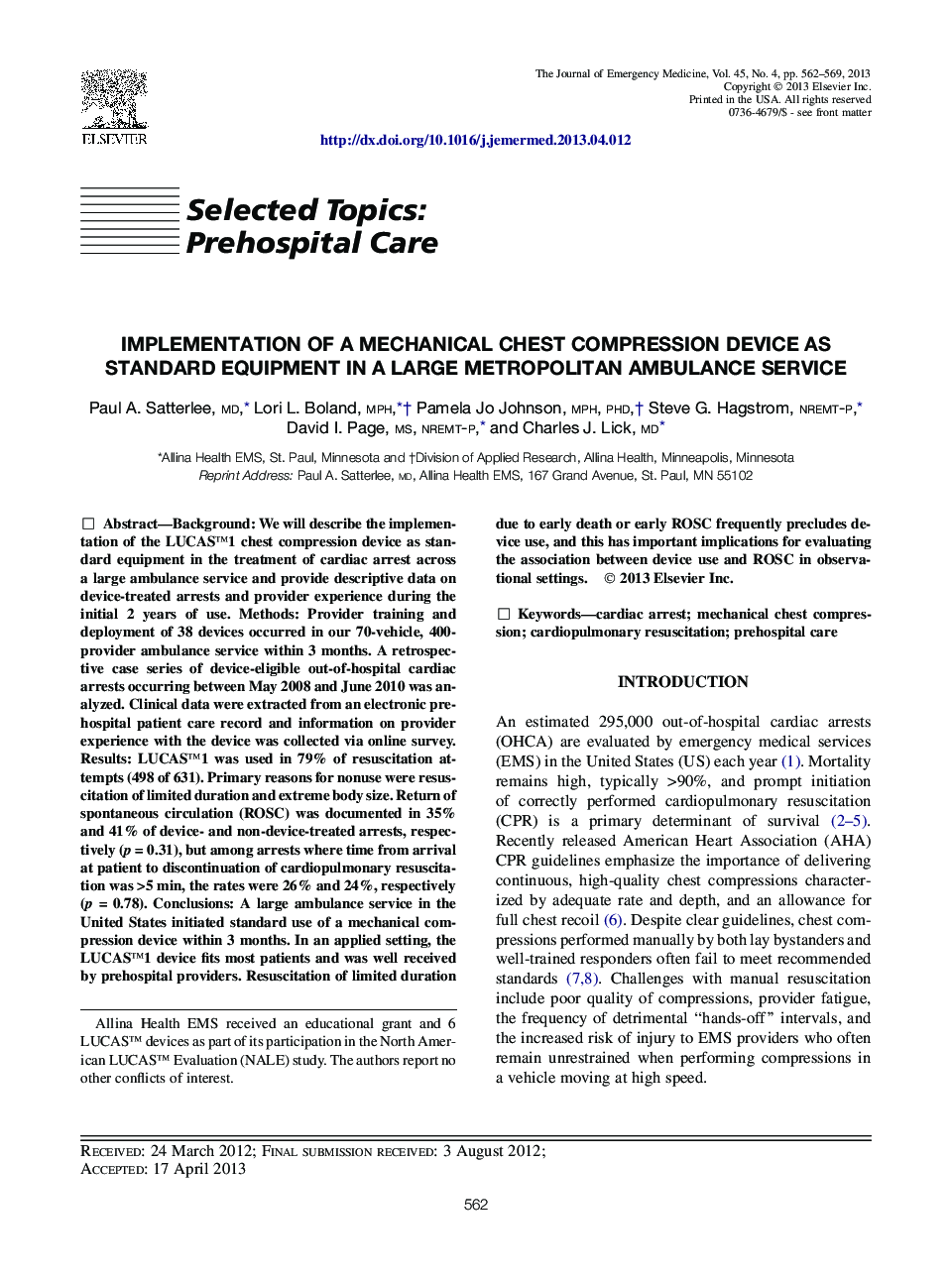| Article ID | Journal | Published Year | Pages | File Type |
|---|---|---|---|---|
| 3247795 | The Journal of Emergency Medicine | 2013 | 8 Pages |
BackgroundWe will describe the implementation of the LUCAS™1 chest compression device as standard equipment in the treatment of cardiac arrest across a large ambulance service and provide descriptive data on device-treated arrests and provider experience during the initial 2 years of use.MethodsProvider training and deployment of 38 devices occurred in our 70-vehicle, 400-provider ambulance service within 3 months. A retrospective case series of device-eligible out-of-hospital cardiac arrests occurring between May 2008 and June 2010 was analyzed. Clinical data were extracted from an electronic prehospital patient care record and information on provider experience with the device was collected via online survey.ResultsLUCAS™1 was used in 79% of resuscitation attempts (498 of 631). Primary reasons for nonuse were resuscitation of limited duration and extreme body size. Return of spontaneous circulation (ROSC) was documented in 35% and 41% of device- and non-device-treated arrests, respectively (p = 0.31), but among arrests where time from arrival at patient to discontinuation of cardiopulmonary resuscitation was >5 min, the rates were 26% and 24%, respectively (p = 0.78).ConclusionsA large ambulance service in the United States initiated standard use of a mechanical compression device within 3 months. In an applied setting, the LUCAS™1 device fits most patients and was well received by prehospital providers. Resuscitation of limited duration due to early death or early ROSC frequently precludes device use, and this has important implications for evaluating the association between device use and ROSC in observational settings.
